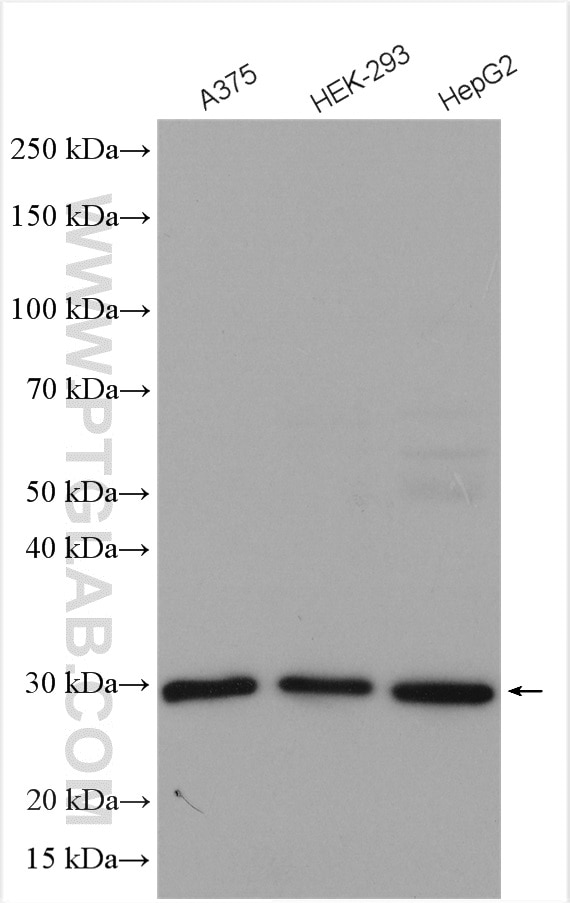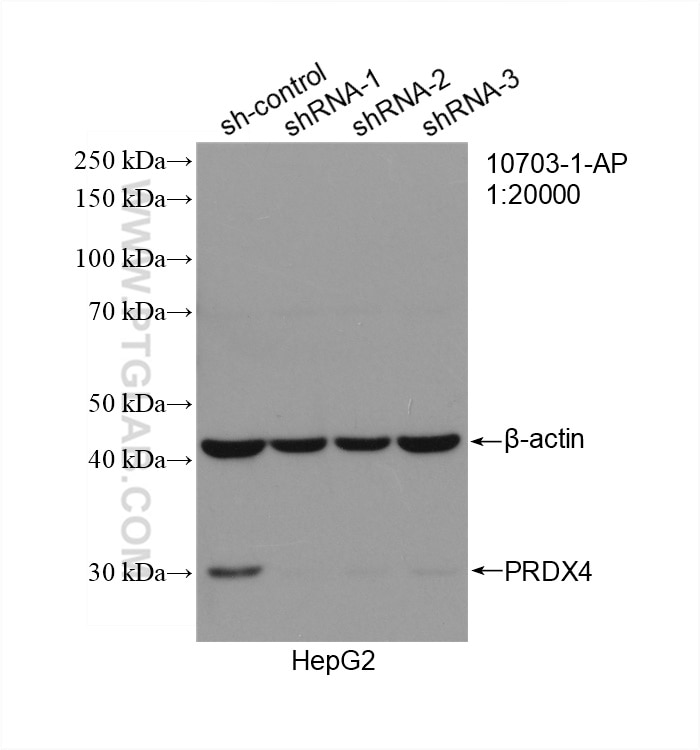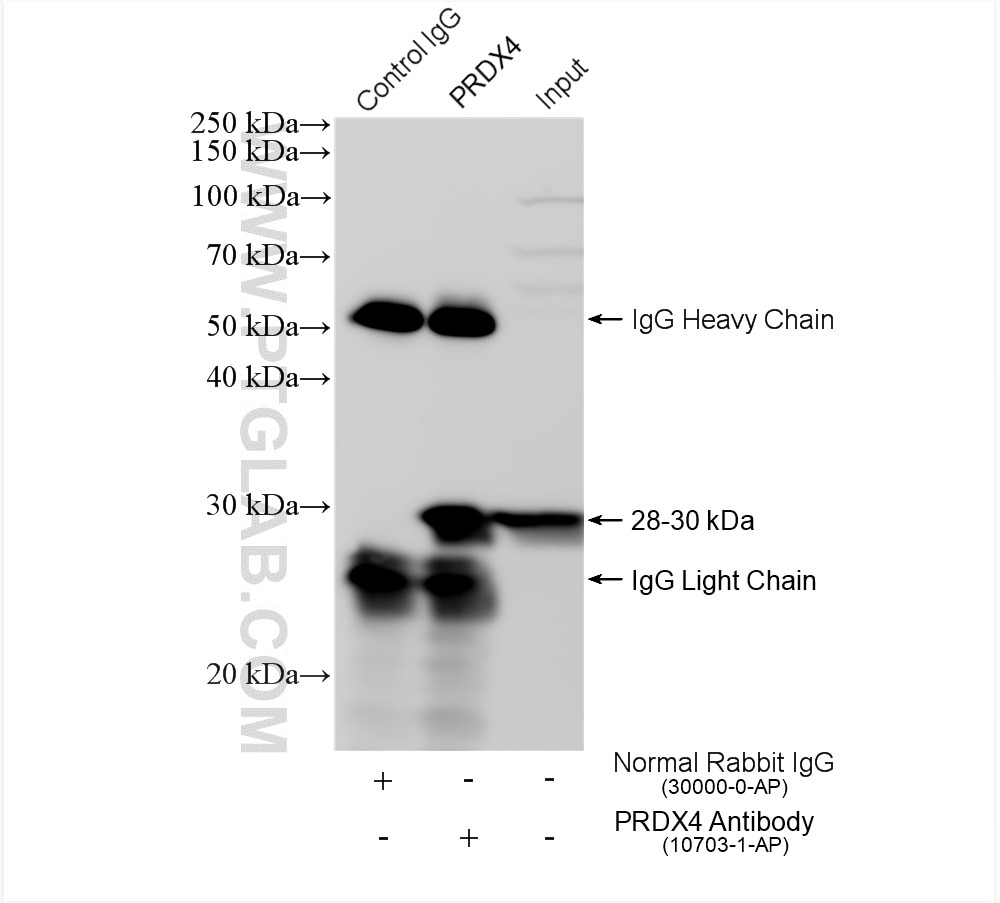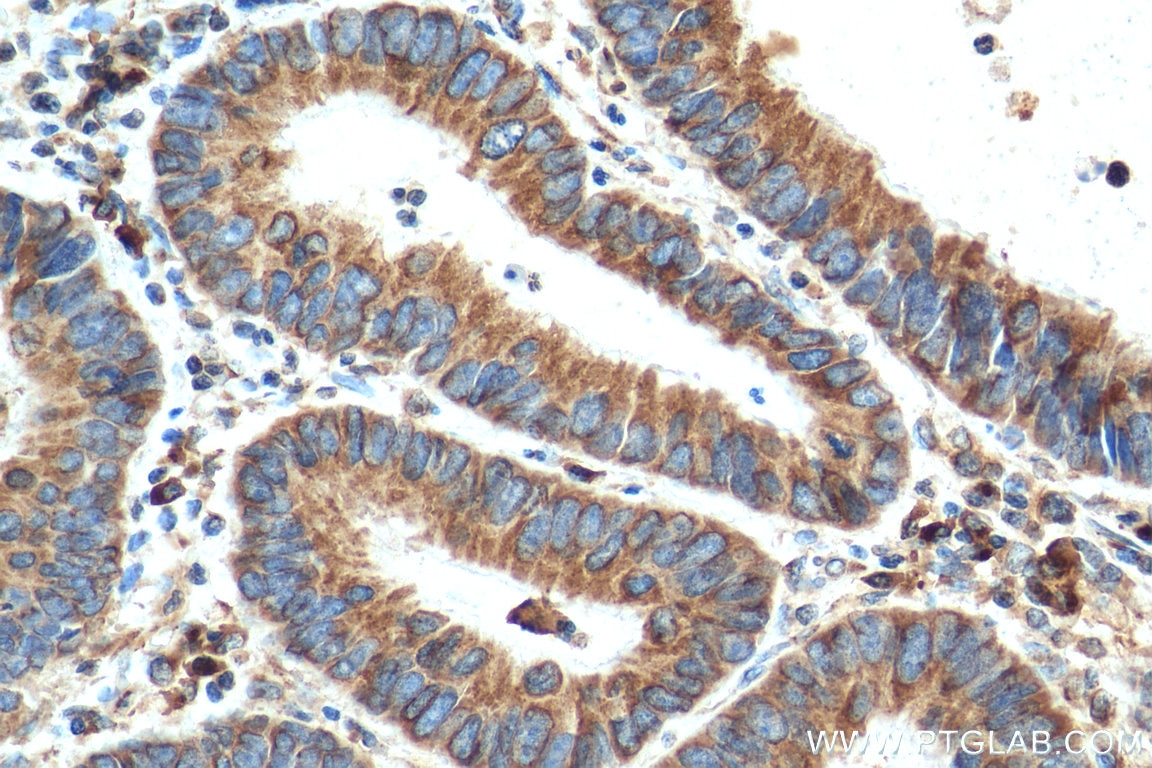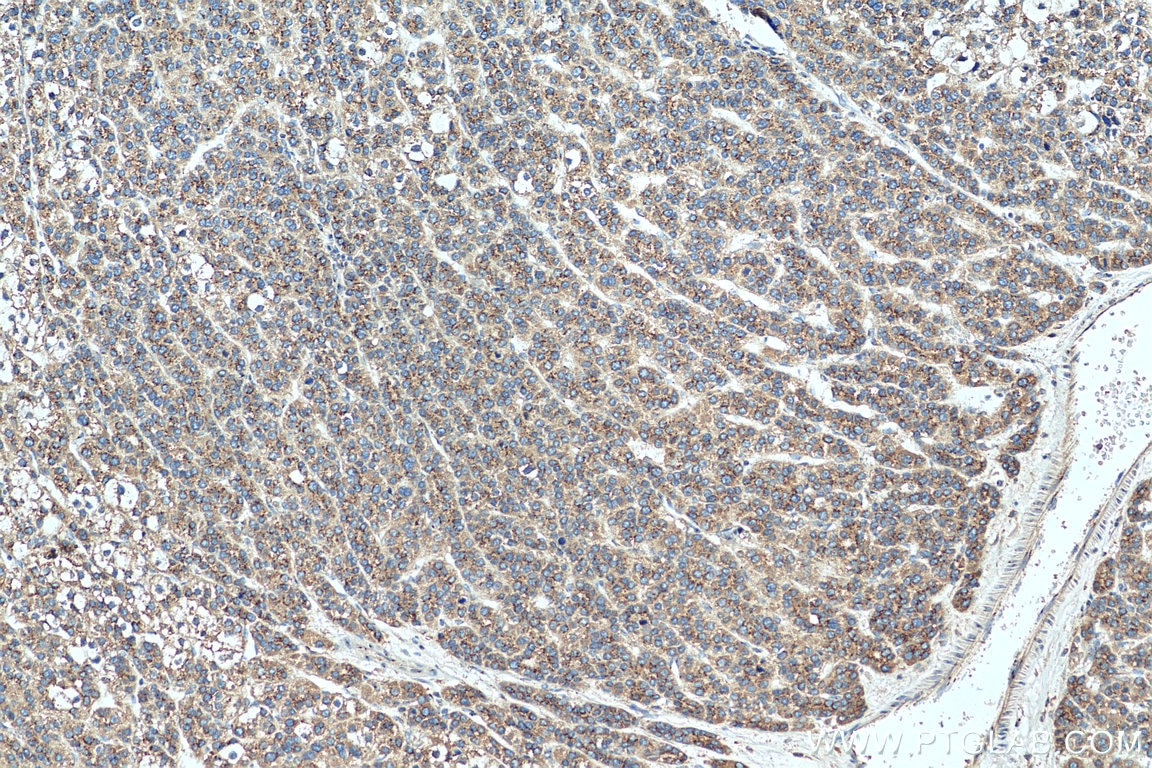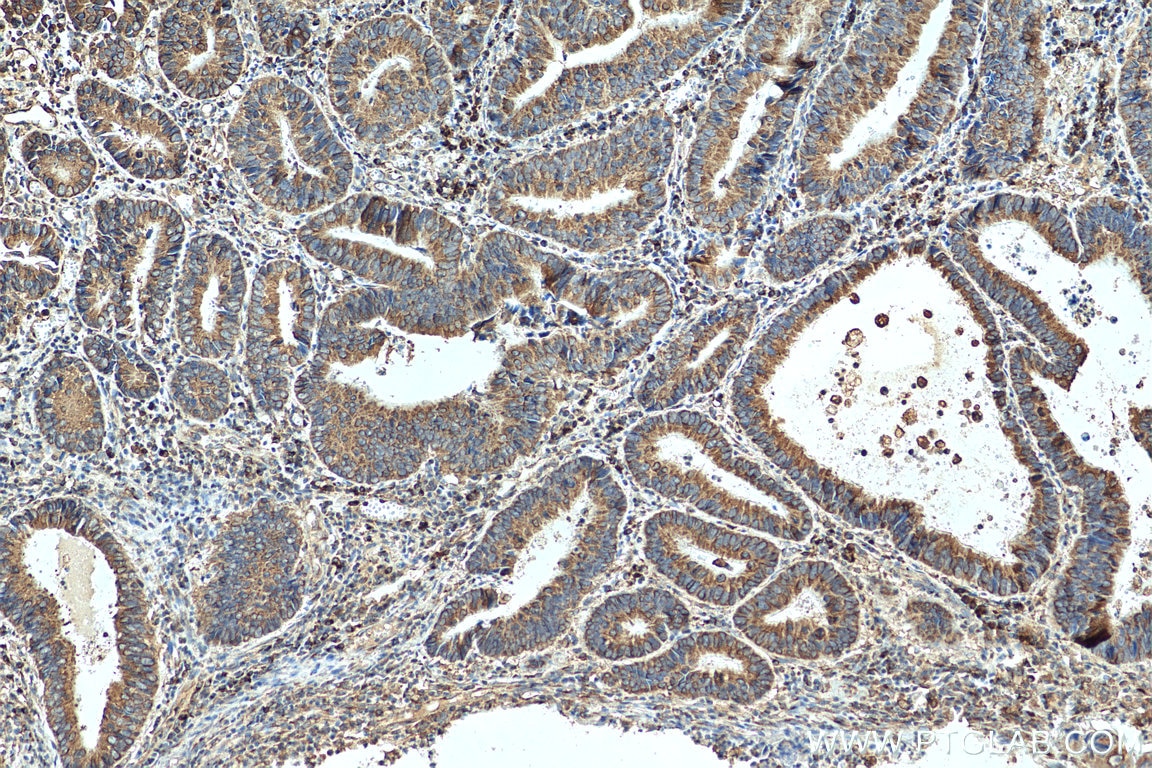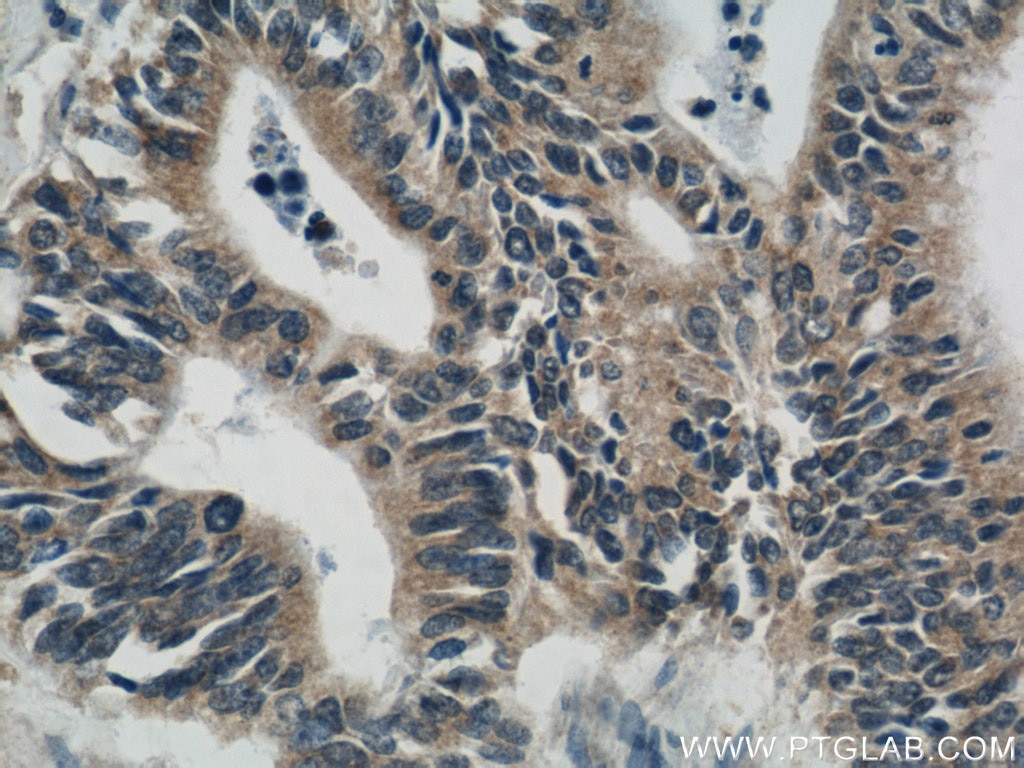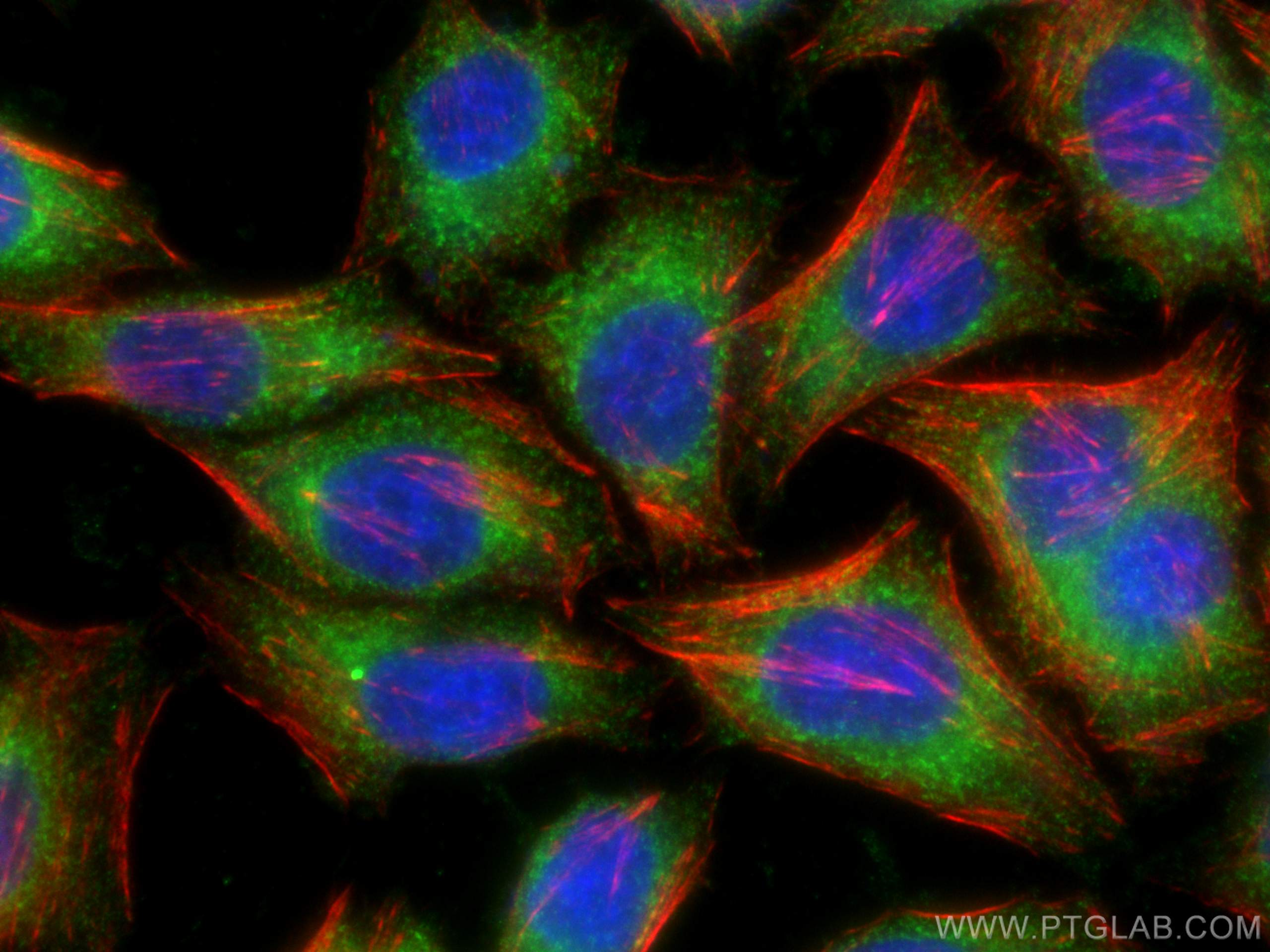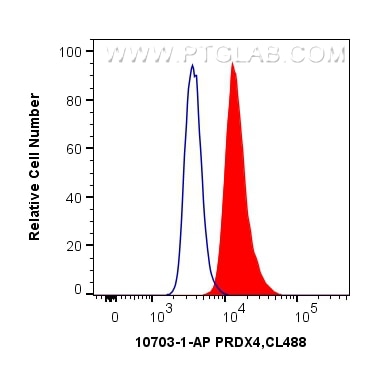- Phare
- Validé par KD/KO
Anticorps Polyclonal de lapin anti-PRDX4
PRDX4 Polyclonal Antibody for WB, IHC, IF/ICC, FC (Intra), IP, ELISA
Hôte / Isotype
Lapin / IgG
Réactivité testée
Humain et plus (3)
Applications
WB, IHC, IF/ICC, FC (Intra), IP, ELISA
Conjugaison
Non conjugué
N° de cat : 10703-1-AP
Synonymes
Galerie de données de validation
Applications testées
| Résultats positifs en WB | cellules A375, cellules HEK-293, cellules HepG2 |
| Résultats positifs en IP | cellules HepG2, |
| Résultats positifs en IHC | tissu de cancer du côlon humain, tissu de cancer du foie humain, tissu de cancer du pancréas humain il est suggéré de démasquer l'antigène avec un tampon de TE buffer pH 9.0; (*) À défaut, 'le démasquage de l'antigène peut être 'effectué avec un tampon citrate pH 6,0. |
| Résultats positifs en IF/ICC | cellules HepG2, |
| Résultats positifs en FC (Intra) | cellules HepG2, |
Dilution recommandée
| Application | Dilution |
|---|---|
| Western Blot (WB) | WB : 1:1000-1:8000 |
| Immunoprécipitation (IP) | IP : 0.5-4.0 ug for 1.0-3.0 mg of total protein lysate |
| Immunohistochimie (IHC) | IHC : 1:50-1:500 |
| Immunofluorescence (IF)/ICC | IF/ICC : 1:50-1:500 |
| Flow Cytometry (FC) (INTRA) | FC (INTRA) : 0.40 ug per 10^6 cells in a 100 µl suspension |
| It is recommended that this reagent should be titrated in each testing system to obtain optimal results. | |
| Sample-dependent, check data in validation data gallery | |
Applications publiées
| KD/KO | See 3 publications below |
| WB | See 18 publications below |
| IHC | See 5 publications below |
| IF | See 6 publications below |
| IP | See 2 publications below |
Informations sur le produit
10703-1-AP cible PRDX4 dans les applications de WB, IHC, IF/ICC, FC (Intra), IP, ELISA et montre une réactivité avec des échantillons Humain
| Réactivité | Humain |
| Réactivité citée | rat, Humain, porc, souris |
| Hôte / Isotype | Lapin / IgG |
| Clonalité | Polyclonal |
| Type | Anticorps |
| Immunogène | PRDX4 Protéine recombinante Ag1177 |
| Nom complet | peroxiredoxin 4 |
| Masse moléculaire calculée | 31 kDa |
| Poids moléculaire observé | 30 kDa |
| Numéro d’acquisition GenBank | BC007107 |
| Symbole du gène | PRDX4 |
| Identification du gène (NCBI) | 10549 |
| Conjugaison | Non conjugué |
| Forme | Liquide |
| Méthode de purification | Purification par affinité contre l'antigène |
| Tampon de stockage | PBS avec azoture de sodium à 0,02 % et glycérol à 50 % pH 7,3 |
| Conditions de stockage | Stocker à -20°C. Stable pendant un an après l'expédition. L'aliquotage n'est pas nécessaire pour le stockage à -20oC Les 20ul contiennent 0,1% de BSA. |
Informations générales
PRDX4 (Peroxiredoxin-4) is also named as AOE37-2, Prx-IV and belongs to the AhpC/TSA family. PRDX4 is associated with acrosome formation during rat spermatogenesis and has a protective role in the male reproductive tract, because the phenotype of mice lacking this isoform includes testicular atrophy and increased sperm DNA damage (PMID:20864641). It is initially synthesized as a membrane-binding 31-kDa protein and processed into a 27-kDa secretory form and is discarded with the residual bodies (PMID:19208552). PRDX4 is a pentamer of dimers (PMID:23025503). This antibody is specific to PRDX4.
Protocole
| Product Specific Protocols | |
|---|---|
| WB protocol for PRDX4 antibody 10703-1-AP | Download protocol |
| IHC protocol for PRDX4 antibody 10703-1-AP | Download protocol |
| IF protocol for PRDX4 antibody 10703-1-AP | Download protocol |
| IP protocol for PRDX4 antibody 10703-1-AP | Download protocol |
| Standard Protocols | |
|---|---|
| Click here to view our Standard Protocols |
Publications
| Species | Application | Title |
|---|---|---|
Nat Commun The deubiquitinase OTUD1 regulates immunoglobulin production and proteasome inhibitor sensitivity in multiple myeloma | ||
Br J Pharmacol Luteolin ameliorates rat myocardial ischemia-reperfusion injury through peroxiredoxin II activation. | ||
Antioxid Redox Signal Pro-Apoptotic Effects of JDA-202, a Novel Natural Diterpenoid, on Esophageal Cancer Through Targeting Peroxiredoxin I. | ||
Bioorg Chem Novel [1,2,3]triazolo[4,5-d]pyrimidine derivatives containing hydrazone fragment as potent and selective anticancer agents. | ||
FEBS J A guide to assessing endoplasmic reticulum homeostasis and stress in mammalian systems. |
